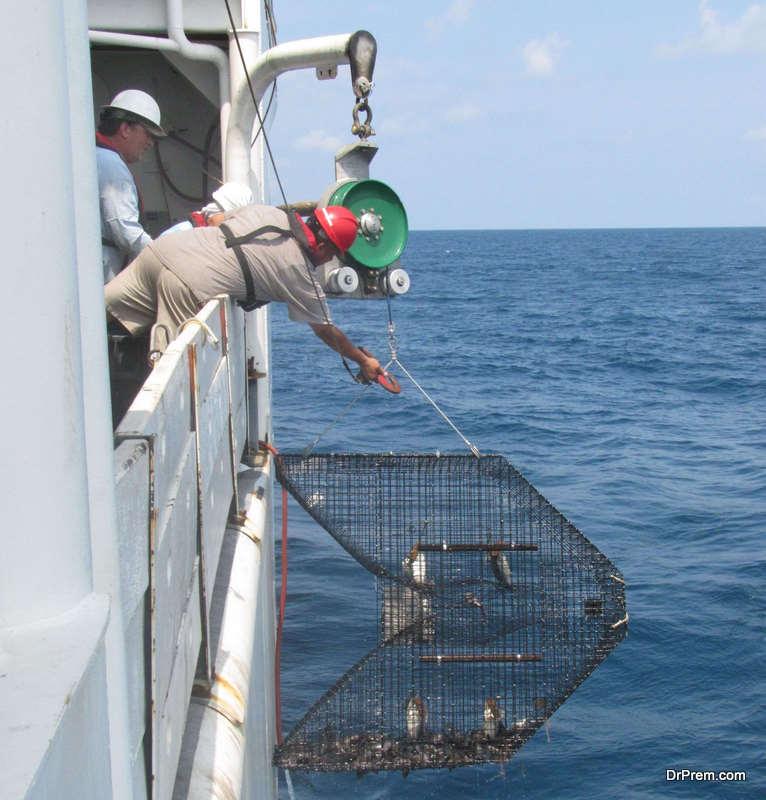Fishing is not just a hobby or a means of livelihood; it is an activity deeply connected to our environment. As concerns about overfishing and the depletion of marine resources grow, we must adopt sustainable fishing practices.
In this guide, we will explore the importance of responsible fishing and provide practical tips from https://www.meltontackle.com/ to help you fish in a way that protects our oceans for future generations.
What Does Sustainable Fishing Mean?
Sustainable fishing is an approach to fishing that seeks to balance fish harvesting with the long-term health and productivity of fish populations and the marine ecosystem. It involves using fishing methods, strategies, and policies that ensure the sustainability of fish stocks, minimize harm to non-targeted species and habitats, and promote the marine environment’s overall health.
Sustainable fishing aims to maintain fish populations at levels that allow for natural reproduction and replenishment. This involves understanding different fish species’ life cycles, breeding patterns, and migration routes to determine appropriate catch limits and fishing seasons. By avoiding overfishing and allowing fish stocks to regenerate, sustainable fishing ensures that future generations can continue to rely on fish as a vital food source.
Another key aspect of sustainable fishing is reducing bycatch, which refers to the unintentional capture of non-targeted species. Bycatch can devastate marine biodiversity, often including endangered or vulnerable species. Sustainable fishing practices employ selective fishing gear and techniques that minimize bycatch, such as using larger mesh sizes in nets to allow smaller or non-targeted species to escape.
Furthermore, sustainable fishing recognizes the importance of protecting habitats and minimizing damage to the marine ecosystem. Fishing methods that can cause harm to sensitive habitats, such as bottom trawling or dynamite fishing, are avoided in favor of more sustainable alternatives.
Tips for Responsible Fishing

Know the Regulations
Before heading out to fish, familiarize yourself with the fishing regulations in your area. These regulations exist to protect fish populations and maintain a healthy ecosystem. Be aware of size limits, catch limits and seasonal restrictions. Ignoring these regulations can lead to overfishing and harm to vulnerable species.
Choose Sustainable Gear
Choosing sustainable gear is a crucial aspect of practicing responsible and sustainable fishing. The gear you use can have a significant impact on the health of fish populations, as well as the overall marine ecosystem. Here are some key considerations when selecting sustainable fishing gear:
Avoid destructive gear: Steer clear of fishing tools that can cause significant damage to the marine environment. This includes gear like dynamite or cyanide, which can have catastrophic effects on fish populations, coral reefs, and other marine habitats. Opt for alternatives that have a minimal negative impact on the ecosystem.
Use selective gear: Selective fishing gear helps reduce bycatch and minimize the capture of non-targeted species. For example, using hooks like circle hooks instead of traditional J-hooks can decrease the chances of gut-hooking fish and increase survival rates during catch-and-release fishing. Nets with larger mesh sizes allow smaller or non-targeted species to escape, reducing unintentional captures.
Consider biodegradable materials: When it comes to fishing lines and other gear components, opt for biodegradable or eco-friendly materials whenever possible. Traditional monofilament fishing lines, for instance, can persist in the environment for hundreds of years. Choosing biodegradable lines or properly recycling fishing gear helps minimize the accumulation of non-degradable waste in oceans and waterways.
Research eco-friendly options: Look for fishing gear manufacturers and suppliers that prioritize sustainability and environmental stewardship. Some companies specialize in producing eco-friendly gear made from recycled or sustainable materials. Research and choose products that have minimal environmental impact throughout their lifecycle.
Support innovation: Stay informed about the latest advancements in sustainable fishing gear. Innovations such as LED lights for attracting fish instead of traditional baited hooks or fish aggregating devices that reduce bycatch are emerging in the market. Supporting and adopting these innovations can contribute to more sustainable fishing practices.
Practice Catch-and-Release
Catch-and-release fishing is an effective method to conserve fish populations. If you don’t intend to consume the fish you catch, handle them carefully and release them back into the water. Use wet hands or gloves to minimize damage to their protective slime layer. Avoid playing fish to exhaustion, as it reduces their chance of survival.
Be Selective
Selective fishing helps minimize bycatch and the capture of non-targeted species. Educate yourself about your target species and learn to identify them accurately. If you catch species that are undersized or protected, release them immediately. By being selective, you contribute to the conservation of vulnerable populations.
Reduce Waste
To minimize waste and promote sustainable fishing practices:
- Avoid Overfishing: Only catch what you need and will consume.
- Handle Fish Properly: Bleed fish immediately after catching them to enhance the quality of the meat and reduce waste.
- Utilize Bycatch: If you catch non-targeted species and are allowed to keep them, use them wisely. Explore recipes or donate them to local communities.
Engage in Conservation Efforts
Support and get involved in conservation initiatives focused on marine ecosystems. Join local clean-up events, participate in citizen science programs, or volunteer for organizations that protect marine life. By actively engaging in conservation efforts, you contribute to the preservation of our oceans.
Educate Others
Spread awareness about sustainable fishing practices among your friends, family, and fellow anglers. Encourage others to adopt responsible fishing habits and explain the importance of protecting our marine resources. Educating and inspiring others can create a larger positive impact on our environment.
Conclusion on sustainable fishing
Choosing sustainable fishing gear is vital for responsible and environmentally conscious fishing. By opting for gear that minimizes harm to fish populations, reduces bycatch, and supports the overall health of the marine ecosystem, we can contribute to the long-term sustainability of our oceans.
Making informed choices, supporting eco-friendly innovations, and prioritizing selective and biodegradable gear are all essential aspects of practicing sustainable fishing. By adopting sustainable gear, we can ensure the preservation of fish populations, protect marine biodiversity, and maintain the health and resilience of our precious marine environments for future generations to enjoy.
Article Submitted By Community Writer




